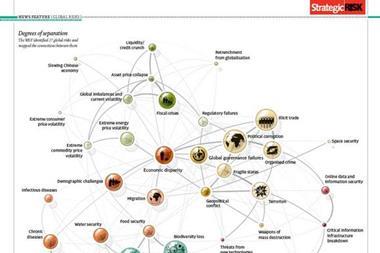82.5% of risk managers said that they have started measuring their insurer counterparty risks more frequently
COMPANIES ARE monitoring the security of their insurers more than ever before, according to a new AIG UK survey. In the poll of major insurance buyers, 82.5% of risk managers said that they have started measuring their insurer counterparty risks more frequently over the past year.
Results also show that, not only are companies measuring their risks more frequently, they are also measuring them in far greater depth. According to the respondents, risk managers are adapting to the challenges produced by the difficult economic climate by continuing to measure risks using rating agency data, as well as increasingly considering guidance from broker rating committees, their own analysis, stock market analysis, and the Credit Default Swap spread.
Philippe Gouraud, head of the major accounts practice at AIG UK Limited, says: ‘Interestingly, one of the other important sources of information that respondents said they use to assess counterparty risk is their peer group, many of which are AIRMIC contacts, showing that intelligence from market contacts is still one of the most useful tools available.
‘Respondents also told us that they are increasingly interested in meeting their underwriters face-to-face in order to understand their risks better and gain reassurance around any exposures. We have found that this cements trust in underwriters, which is often more relevant than third party information from agencies and others. Good relationships with claims managers also help to underpin the association with an insurer.’
Such increased insurer scrutiny brings added benefits. Seventy-six percent of respondents feel that they now have a better understanding of their exposures, while 75% communicate with their carriers more frequently, and more than half consider counterparty risks at board level (56%).
The results also revealed what is important to companies when they review their insurance programme’s security. Understanding their insurer at every level came top, as companies look for reassurance around the ability of companies (and their parents) to pay claims. Other important factors were advice from brokers; reviewing carriers’ reinsurance; meeting insurers face-to face; claims paying performance and media coverage.
What action are companies taking to mitigate concerns that they may have about their insurers’ security? Most (93%) are excluding carriers that fall below a certain agency rating; four out of five are adding termination clauses in case of a downgrade; nearly two thirds (64%) are spreading their insurance programme among more carriers, and 29% are retaining more risk through captives.
‘As insurers operate within a highly regulated environment it helps maintain market confidence and discipline. Therefore, insurance remains a relatively safe haven and a viable partner for transferring risk,’ says Gouraud.















